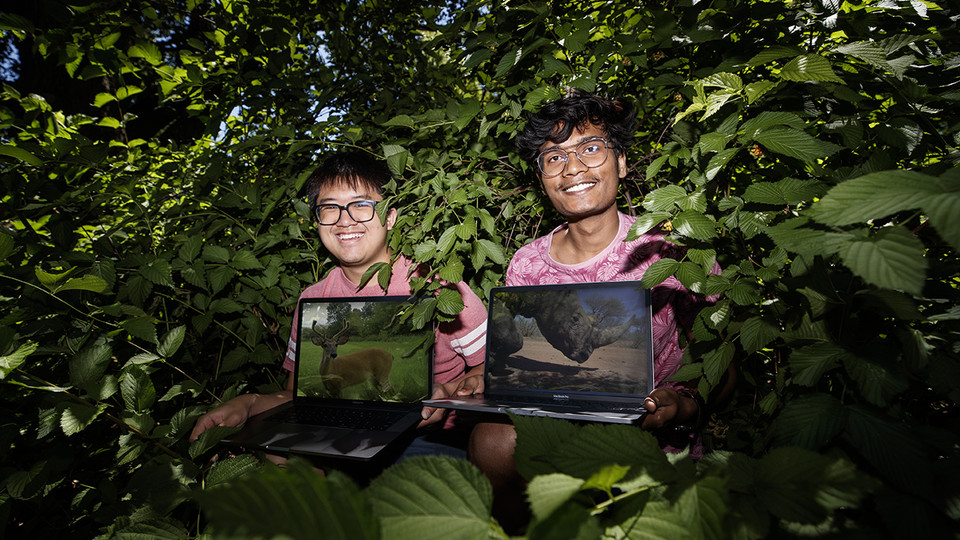
When computer science students Brian Chong and Rahul Prajapati reached the end of their Deep Learning class last spring, it also meant parting ways with a project they’d worked on together all semester.
From January to April, Chong and Prajapati learned how to develop an algorithm that could automatically identify and count wildlife in camera-trap images. As their first foray into deep learning, the project wasn’t easy — but under the guidance of professors Stephen Scott, Mohammad Hasan and numerous teaching assistants and classmates, the two made strides in their research and became passionate about helping animals and conservationists through technology.
Before long, Chong and Prajapati’s project had transformed into something more than just a required assignment. The pair felt compelled to continue researching after their class ended – and found that opportunity through Nebraska’s summer Undergraduate Creative Activities and Research Experience program.
Beginning in June, Chong and Prajapati began working under Hasan to expand on their prior research. The students meet in the Adele Learning Commons several times a week to feed thousands of the wildlife images into an algorithm on their computers.
“It's really amazing to see these algorithms working in real life, how they can solve real problems,” Prajapati, a junior from Indore, India, said. “When we started this journey, we didn’t expect that we could do this. It was really amazing to see that we can.”
Contrary to their name, camera-trap images do not depict captured wildlife. The pictures track the behavior of animals as they move about, whether that’s in the wild or on a farm in Nebraska.
These images are useful to ecologists, conservationists, farmers and academic researchers in learning more about and protecting wildlife. However, they also require humans to identify and count each animal by hand. This task is often completed by citizen scientists, but when the volunteers are tasked with labeling hundreds or thousands of these pictures, the process quickly becomes time-consuming.
In addition to being a slow process, identifying animals by hand can also be a risky one. Publishing photos of endangered or rare wildlife to citizen scientist websites can expose their location to poachers.
By training computers to automatically label these images, Chong and Prajapati hope to make the process faster and safer. During the second phase of their project, they plan to expand their algorithm to identify behavioral changes in animals as well.
The students compare deep learning to a neural network – just as your brain can instantly detect and understand the things around you, so can a computer, after so many images are presented to it.
“Deep learning is a subset of machine learning,” Prajapati said. “Machine learning handles numerical data, but deep learning handles the pixel values and the image.”
In the future, Chong and Prajapati’s research might be implemented right here in Nebraska. The students have partnered with Andrew Little, assistant professor in the School of Natural Resources, to train their computers to identify coyotes, deer, fox, rabbits, wild turkeys and more local wildlife.
The technology could be used by landowners and state agencies to rapidly assess wildlife populations — potentially saving large amounts of their budget and manpower.
"This is a very unique opportunity for Nebraska as a whole. As far as I know, we're one of only a few universities piloting this work, and the time and money saved by automating the wildlife identification process will be significant,” Little said. “This technology is truly a game changer for wildlife ecology.”
Later down the road, the two also want to create a website that could be used by anyone wanting to learn more about wildlife they come across.
“We aren’t sure about future plans yet, but we are hoping that our tool can help everyone,” Chong, a senior from Kajang, Malaysia, said.
“It will be really amazing to see the results,” Prajapati added.
Lindsey Amen | University Communication